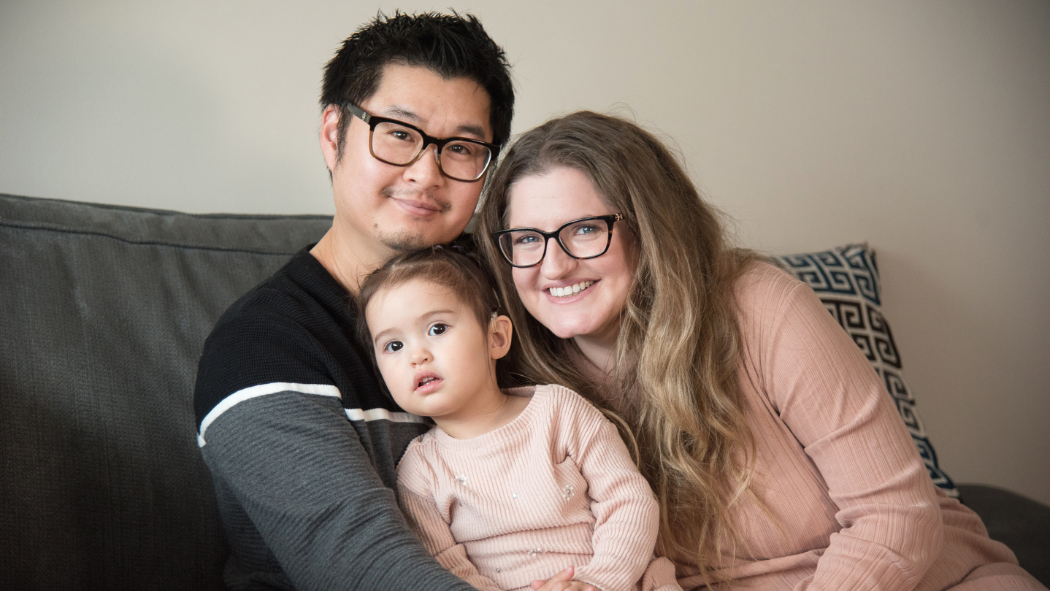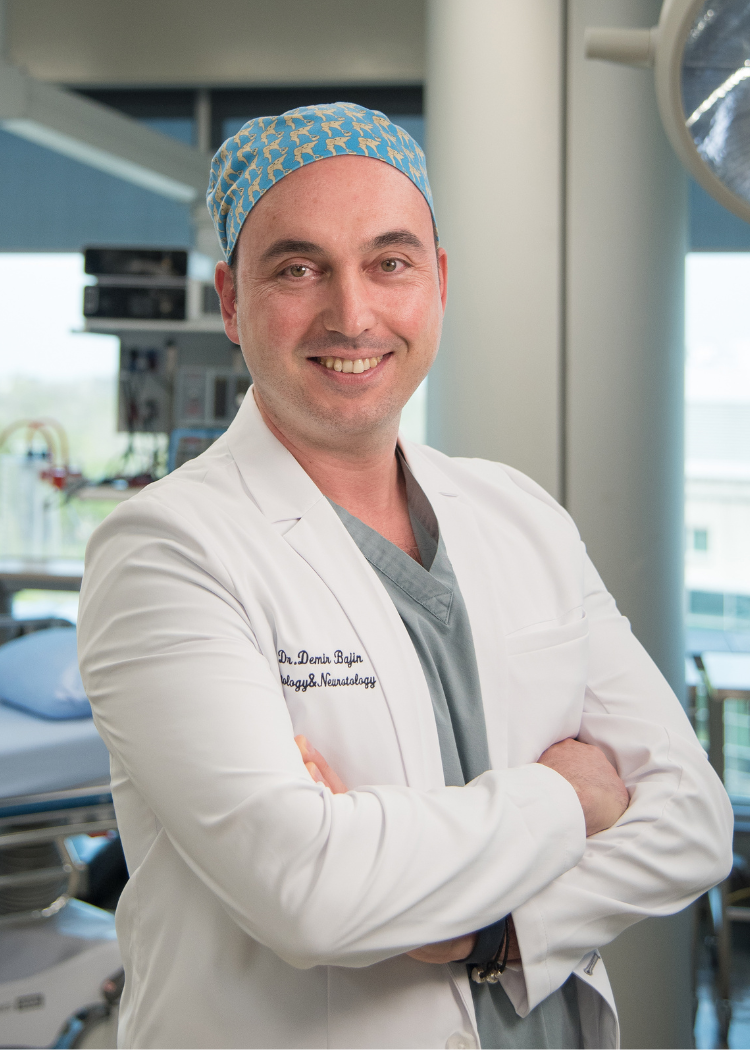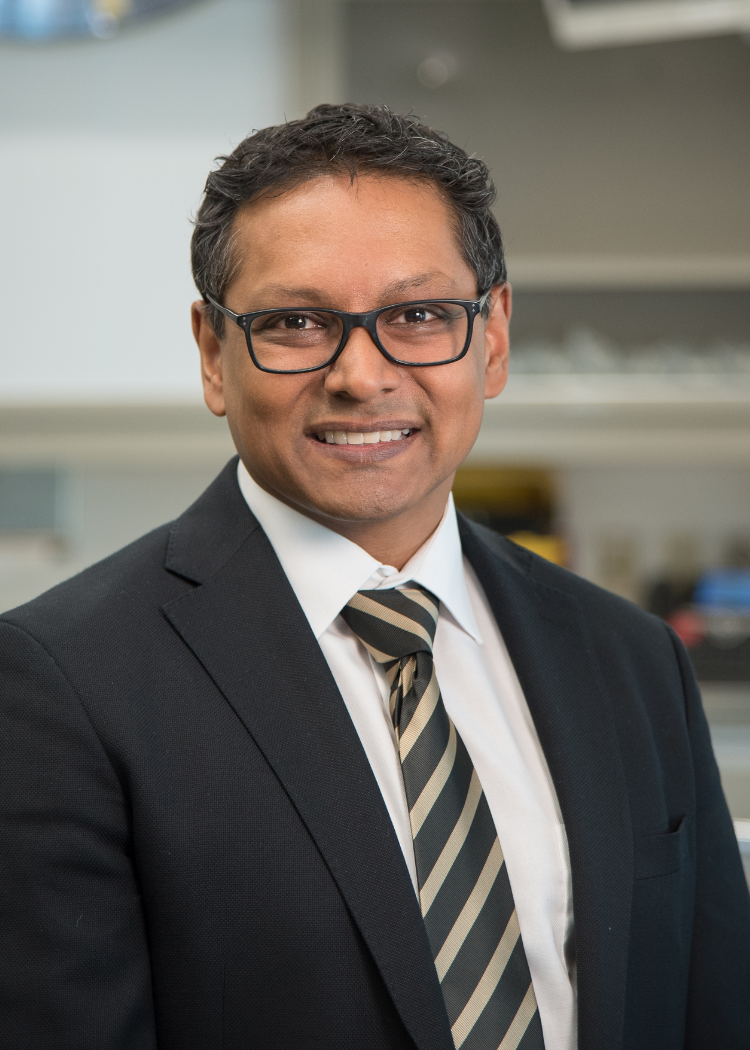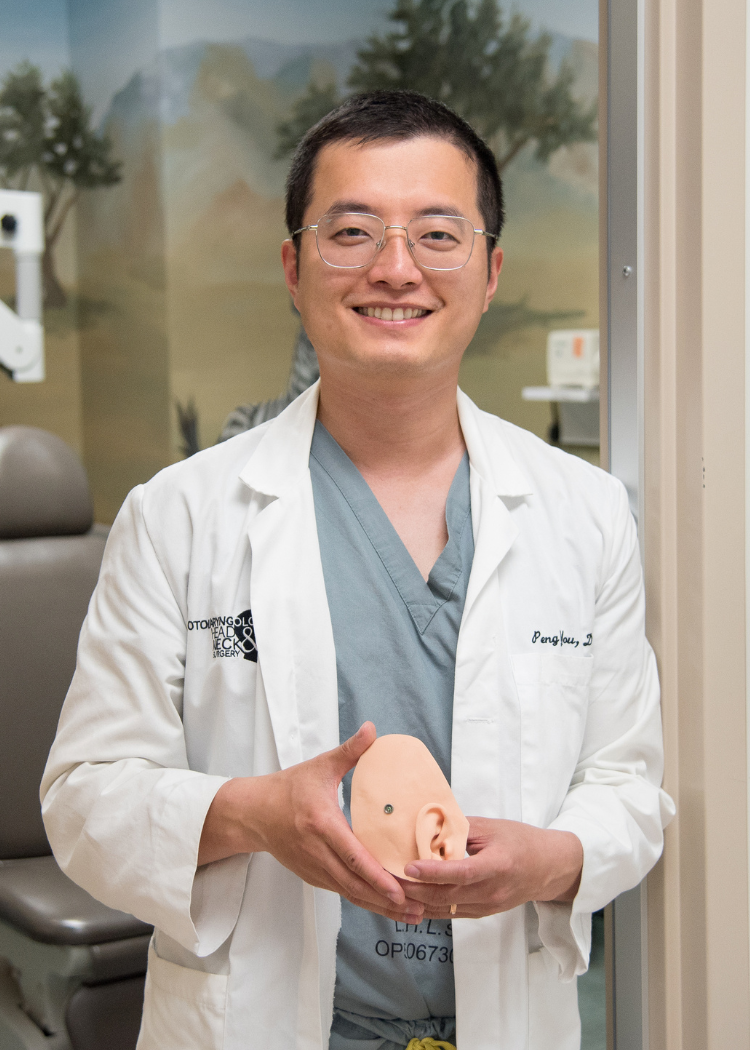
Pictured: Savannah with her parents Jacquelyn and Danny Lee.
June 17, 2025
There’s new hope for hearing with the introduction of three new hearing surgeries now being offered to young patients at Children’s Hospital at London Health Sciences Centre (LHSC).
Over the past year, a multidisciplinary team became the first in Canada to perform a paediatric auditory brainstem implant (ABI) and the first in North America to robotically insert a paediatric cochlear implant. They also brought care closer to home by adding the Oticon implant, an established bone conduction hearing device, to their surgical portfolio.
“London Health Sciences Centre was the first HEARRING Centre of Excellence in Canada, so it’s only natural we continue leading the way with innovative treatments,” says Dr. Sumit Agrawal, head of LHSC’s department of otolaryngology – head and neck surgery. “We’re thrilled to have expanded our surgical offerings to include the most up to date, cutting edge options, including the ABI, robotic cochlear and Oticon implants. Together, we’re making hearing more accessible for thousands of patients who need us most.”
Savannah’s story
Having been born without hearing, Savannah Lee, then one year old, became the first child in the country to receive the ABI when she underwent the procedure in July 2024. Today, she remains only one of two paediatric patients in Canada who have had their hearing restored because of this ground-breaking surgery. Both cases were completed at LHSC.
The diagnosis and early intervention
When Savannah was born on January 3, 2023, her parents Jacquelyn and Danny Lee noticed one of her ears didn’t look like the other and that she didn’t appear to be hearing well – if at all.
After a series of tests through Ontario’s Infant Hearing Program kept coming back inconclusive, Savannah was referred to Children’s Hospital, where she would undergo more robust testing, including an MRI. It was there that specialists confirmed she had an inner ear malformation and lacked a cochlear nerve, which is responsible for hearing, on the right side. To make matters more complicated, while she did appear to have a cochlear nerve on the left side, it was too small to function properly. This meant Savannah’s parents were faced with the very real possibility she would never hear well or develop spoken language.
“We were absolutely devastated,” says Danny. “It was heart breaking to realize she might not have the upbringing we imagined for her, so we took some time to process the news and then turned our attention to figuring out how we could still give her the best quality of life possible.”
While cochlear implants are traditionally given to patients with profound hearing loss, Savannah was not eligible for one on the right side because she was born without the required cochlear nerve.
Thankfully, Savannah’s care team had another option up their sleeve: a paediatric auditory brainstem implant (ABI) that had never before been used in Canada. It would be a risky surgery, as they would be bypassing the ear and going directly into her brain, but it was Savannah’s best chance to hear.
“Despite the risks, learning there was a new surgery we could try was a breath of fresh air,” says Danny. “We were told that if this was five years ago, Savannah would have to go through life without hearing, but today, Dr. Bajin was preparing to do ground-breaking procedure right here in London. We had no idea what ABI even stood for, but the bottom line was it could potentially give her the gift of sound, so we said yes.”
The surgery and activation
A few months later, Savannah was wheeled into the operating room (OR) for the four-hour procedure. Danny and Jacquelyn waited nearby for news.
The surgical team was led by Dr. Demir Bajin, a world-renowned otolaryngologist at LHSC. It also included fellow otolaryngologists Drs. Sumit Agrawal and Lorne Parnes, neurosurgeon Dr. Sandrine De Ribaupierre, and audiologist Laura Hopkins. MED-EL, the company that made Savannah's implant, also sent a team from Austria to support in the OR.
When the surgery was complete, Savannah’s parents received the good news: it went well. But getting through the surgery was only half the battle.
The implant would still need to be activated, and this was also not without risk, as it was embedded in the part of the brain that controls one’s breathing, heart rate, blood pressure and other vital systems. The activation took place about a month later in the Paediatric Critical Care Unit (PCCU) and was successful.
The moment Savannah heard her first sound was one Danny, Jacquelyn and Savannah’s care team will never forget: Someone off to the side clapped their hands and Savannah detected it and turned her head.
“Words can’t describe how emotional and overwhelming it was being there and watching her face as the device was turned on,” says Jacquelyn. “I thought, ‘Oh my gosh, my baby can hear,’ and then my mind went to, ‘Wow, this means she’ll be able to live her life more safely because she’ll be able to hear things like oncoming cars.’ I think that’s when just how miraculous this was really sunk in.”
Savannah today

Fast forward to today and Savannah is thriving. She can hear sufficiently and is playing and learning like other children her age. She may still have some hearing challenges as she grows up, but access to sound provided by the implants provides Savannah with opportunities that she wouldn't otherwise have.
Earlier this year, Savannah received a cochlear implant in her left ear. She now has what her care team describes as the “best of both worlds” – an ABI on one side and a cochlear implant on the other. Together, these two hearing technologies allow Savannah to localize sounds, hear better in noisy environments and experience improved audibility.
“Our day to day is very busy,” says Jacqueline. “We are always swimming, playing or exploring. Savannah likes to dance to the Wiggles and go to the library. She also enjoys going to PetSmart to see the animals, so there’s never a dull moment.”
Jacqueline and Danny say Savannah’s hearing implants have really bolstered her independence. She’s resilient, independent and excelling with language, which would not have been possible without her ability to hear.
Auditory brainstem implants (ABI)

“Auditory brainstem implants (ABI) are typically used for patients who cannot benefit from traditional cochlear implants due to the absence of or damage to their cochlear nerve, which is the part of the inner ear that is responsible for sending hearing signals to the brain,” explains Dr. Bajin, who has extensive clinical and research experience with ABIs.
ABIs bypass the cochlear nerve entirely and directly stimulate the brainstem to create auditory sensations. They work by converting sounds into electrical signals, which the implant sends to the brainstem, allowing the patient to perceive sound.
While ABIs have previously been offered to adults in Canada and to children in other areas of the world, Savannah was the first paediatric patient in the country to receive one, thanks to Dr. Bajin’s rare expertise. He is currently the only surgeon in Canada who performs paediatric ABIs, making LHSC the single referral centre for children across the country who could benefit from this type of implant.
“This technology is a game-changer,” says Dr. Bajin. “It feels amazing to be able to provide a solution for children like Savannah who would otherwise never be able to hear, and I’m confident her case will pave the way for other kids across Canada to access this same technology in the future.”
Robotic cochlear implants

LHSC completed North America’s first paediatric robotic cochlear implant surgery in February 2025, thanks to the generosity of London Health Sciences Foundation donors. The procedure was led by Drs. Agrawal, Bajin and Parnes using a specialized robot called the OTODRIVE, which was bought from Austrian manufacturer MED-EL.
Cochlear implants are designed for individuals with hearing loss resulting from absent or damaged cochlear structures. They work by bypassing damaged parts of the inner ear and directly stimulating the cochlear nerve with electrical signals.
During the procedure, a special 28-millimeter-long electrode needs to be inserted into the inner ear extremely slowly. When done by hand, humans can typically insert the electrode as slow as 0.3 to 0.5 millimeters per second, whereas the robot can insert it as slow as 0.1 millimeter per second.
“We know that if the electrode is inserted too quickly or with too many stops and starts, the inner ear structure can become damaged, so the speed and steadiness of every millimeter matters,” explains Dr. Agrawal. “Our ability to insert them robotically means we can now perform these procedures more safely and with less risk.”
Oticon implants

LHSC began offering the Oticon implant, a type of bone conduction hearing device, in March 2024. While the technology is not new, this is the first time LHSC has received permanent funding to offer the implant to patients who aren’t suitable candidates for other types of hearing devices. Patients were previously referred to other areas of province for this procedure.
The Oticon implant is a small abutment that is implanted on the skull. For patients without an ear canal, it works by sending vibrations through the bone directly to the inner ear. They tend to be more effective than external hearing aids, which require frequent adjustments and can cause sound to be lost as it transfers.
“We’re excited to have brought this care close to home,” says Dr. Peng You, otolaryngologist at LHSC. “A lot of our families say they feel relieved they no longer have to travel elsewhere and feel empowered by all the choices they now have at LHSC. For us physicians, that’s what it’s really all about – being able to provide the right care, to the right patient, at the right time.”
